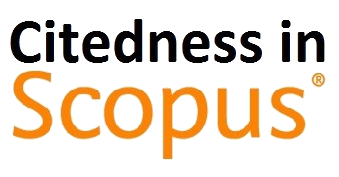Implementation of Technique for Order Preference by Similarity to Ideal Solution (TOPSIS) in Recommendations for New Position in Companies
(1) Universitas Budi Darma, Medan
(2) Universitas Budi Darma, Medan
(3) Politeknik LP3I Medan, Medan
(4) Universitas Medan Area, Medan
(5) Universitas Bina Insan, Lubuklinggau
(*) Corresponding Author
Abstract
This study aims to provide support to management in recommendations for promotion of employee promotions, with the aim of providing motivation to employees. The problem encountered at this time is the number of employees making it difficult for management to choose employees to recommend in promotions for promotions. In this research, the method used is Technique for Order Preference by Similarity to Ideal Solution (TOPSIS) which is a fairly good method in ranking where the best alternative is the alternative that has the closest distance to the best alternative and far from the worst alternative. From the research results, it can be concluded that the A5 alternative is the best with a value of 0.748 and can be recommended in a new position promotion at the company.
Full Text:
PDFReferences
Efraim Turban and Jay E. Aronson, Decision Support System and Intelligent Systems. 2001.
T. Limbong et al., Sistem Pendukung Keputusan: Metode & Implementasi. Medan: Yayasan Kita Menulis, 2020.
D. Nofriansyah and S. Defit, Multi Criteria Decision Making (MCDM) pada Sistem Pendukung Keputusan. 2018.
S. H. Sahir, R. Rosmawati, and K. Minan, “Simple Additive Weighting Method to Determining Employee Salary Increase Rate,” Int. J. Sci. Res. Sci. Technol., vol. 3, no. 8, pp. 42–48, 2017.
I. Judi, T. Situmeang, S. Hummairoh, and S. M. Harahap, “Application of SAW ( Simple Additive Weighting ) for the Selection of Campus Ambassadors,” IJICS (International J. Informatics Comput. Sci., vol. 5, no. 1, pp. 21–28, 2021.
G. Ginting, Fadlina, Mesran, A. P. U. Siahaan, and R. Rahim, “Technical Approach of TOPSIS in Decision Making,” Int. J. Recent Trends Eng. Res., vol. 3, no. 8, pp. 58–64, 2017.
Jasri, D. Siregar, and R. Rahim, “Decision Support System Best Employee Assessments with Technique for Order of Preference by Similarity to Ideal Solution,” Int. J. Recent TRENDS Eng. Res., vol. 3, no. 3, pp. 6–17, 2017.
S. M. Harahap, I. Judi, T. Situmeang, and S. Hummairoh, “Implementation of Weighted Aggregated Sum Product Assessment ( WASPAS ) in Determining the Best Graduates,” IJICS (International J. Informatics Comput. Sci., vol. 5, no. 1, pp. 44–51, 2021.
N. K. Daulay, B. Intan, and M. Irvai, “Comparison of the WASPAS and MOORA Methods in Providing Single Tuition Scholarships,” IJICS (International J. Informatics Comput. Sci., vol. 5, no. 1, pp. 84–94, 2021.
R. Khorshidi and A. Hassani, “Comparative analysis between TOPSIS and PSI methods of materials selection to achieve a desirable combination of strength and workability in Al/SiC composite,” Mater. Des., vol. 52, no. June, pp. 999–1010, 2013.
S. Kusumadewi, S. Hartati, A. Harjoko, and Retantyo Wardoyo, Fuzzy Multi-Attribute Decision Making (FUZZY MADM). 2006.
K. D. Maisari, D. Andreswari, and R. Efendi, “Implementasi Metode TOPSIS dengan Pembobotan Entropy untuk Penentuan Calon Penerima Bantuan Siswa Miskin (BSM) APBD Kota Bengkulu( Studi Kasus : SMAN 8 Kota Bengkulu ),” J. Rekursif, vol. 5, no. 2, pp. 179–194, 2017.
Y. Zai, M. Mesran, B. Nadeak, and I. Saputra, “PENERAPAN TECHNIQUE FOR ORDERS PREFERENCE BY SIMILARITY TO IDEAL SOLUTION (TOPSIS) UNTUK KEPUTUSAN PEMBERIAN KREDIT PADA CALON NASABAH (Studi Kasus : PT. SS Finance),” MEDIA Inform. BUDIDARMA, vol. 1, no. 1, Feb. 2017.
S. Syamsudin and R. Rahim, “Study Approach Technique for Order of Preference by Similarity to Ideal Solution (TOPSIS),” Int. J. Recent Trends Eng. Res., vol. 3, no. 3, pp. 268–285, 2017.
Refbacks
- There are currently no refbacks.
Jumlah Kunjungan:
Published Papers Indexed/Abstracted By:












